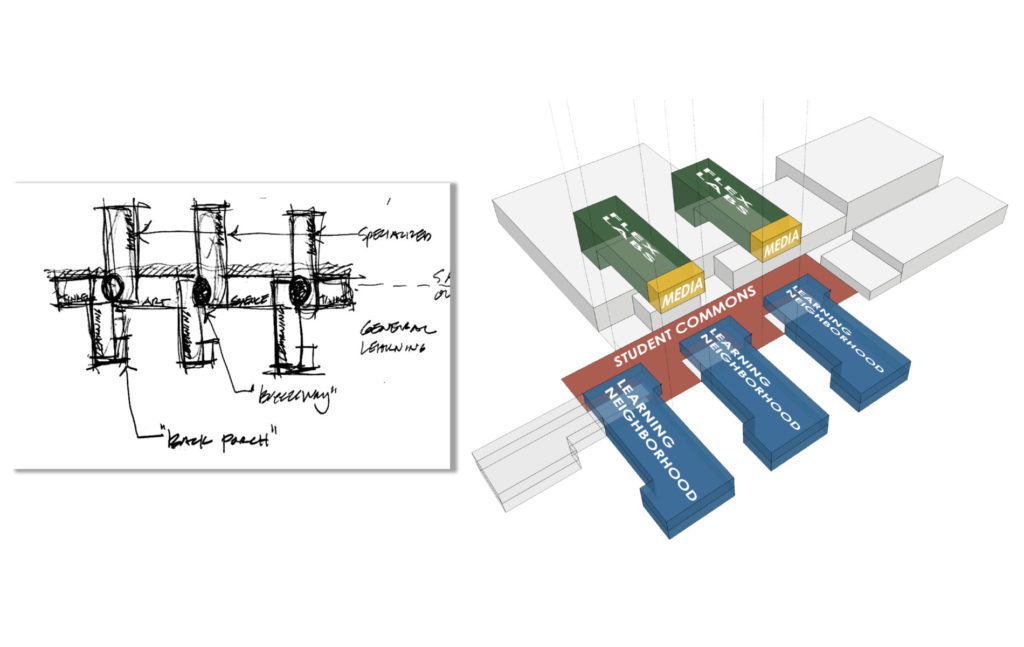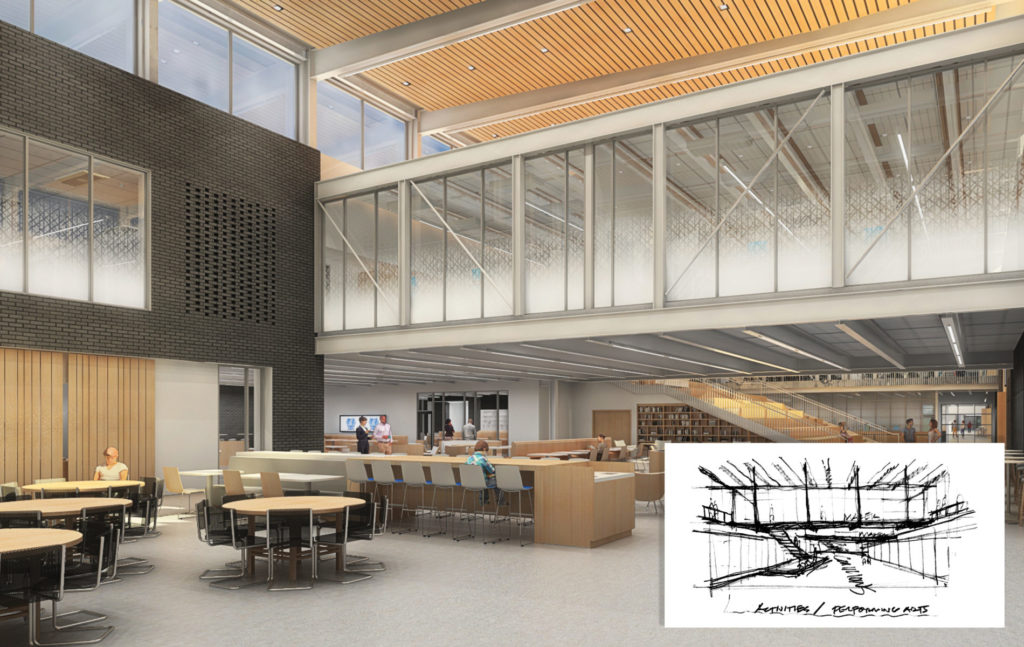Custom Solutions and the Art of Listening
Custom Solutions and the Art of Listening

The spaces that Cuningham Group designs tell our clients’ individual stories and celebrate their personal experiences. Because of this, we depend on the power of listening and asking the right questions to reveal the inherent story of each client that is in line with their vision and objectives. We then use these personalized visions to create designs that best serve the client's specific wants and needs. And nowhere is this collaborative strategy more important than with our work designing innovative learning environments.
In order to create flexible learning spaces that accommodate all learning styles, our teams listen to the wisdom of collective experience, employing a co-creative visioning workshop to guide the design process. During these workshops, clients are asked to envision a new kind of future and then, to participate in developing a conceptual design in real time based on a shared vision. The intention is to focus on the feeling of the spaces instead of their designated subject and square footage.

Establishing a Shared Vision
The purpose of a Vision Statement is to provide an overall guide for the entire process, establish priorities, align resources with those priorities, and facilitate efficient decision making. Ultimately, the result is a rock-solid foundation upon which to develop and implement the design approach. This is especially important when trying to establish programmatic shifts within a school’s media spaces. Simply put, there is no blueprint for innovation. There is only what the client wants, which we discover through an engaged listening process.
Sometimes, what the client wants is what they already have, though they may have a difficult time articulating this. That is why, by not focusing on specific space characteristics and instead discussing the type of learning/activities they want to happen, our intent listening process allows us to challenge the client, discovering together what they want and need.
Listening in Action
A recent example of how a listening process is brought to fruition can be seen in Cuningham Group’s work with the school district in Sartell, Minnesota, in designing an all-new high school. After engaging in co-creative visioning workshops with a committee that consisted of more than 70 members representing all major stakeholder groups, it was established that Sartell needed a space that celebrated learning with an open environment — one that could connect and integrate content areas, making learning visible.
In one of these first meetings, Cuningham Group Architect Scott Krenner developed a conceptual design in real time based on a programmatic vision described by the client. The rough sketches the team left with that day became the foundation of the entire project — a design that features Learning Neighborhoods connected by “bridges” to more specialized programs. By genuinely listening to the needs of the client, Cuningham Group was able to develop an innovative learning environment tailored specifically to the educational vision of the Sartell community.
